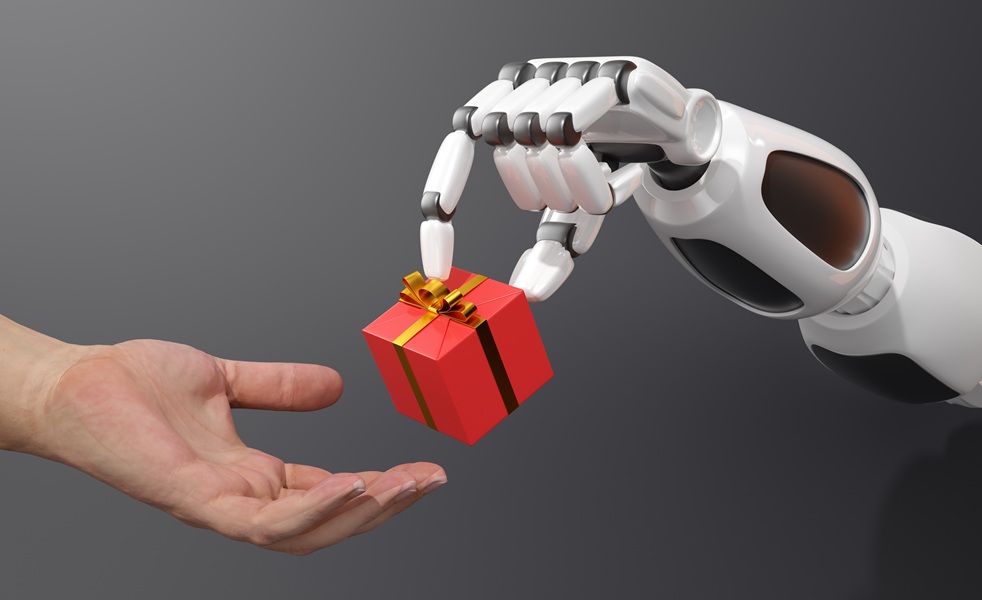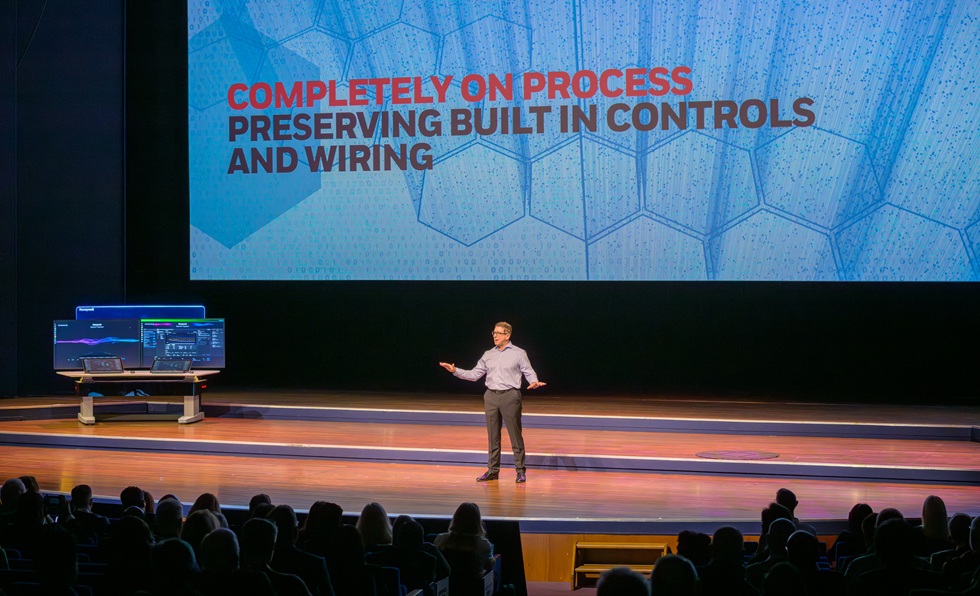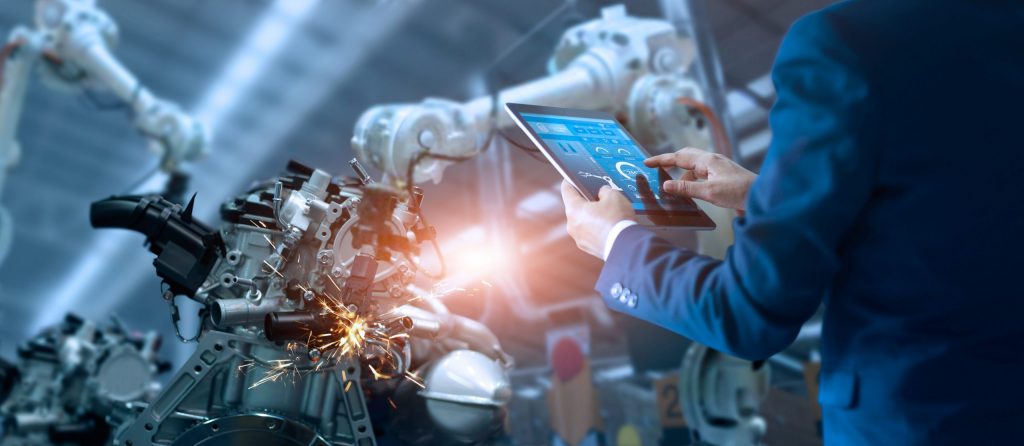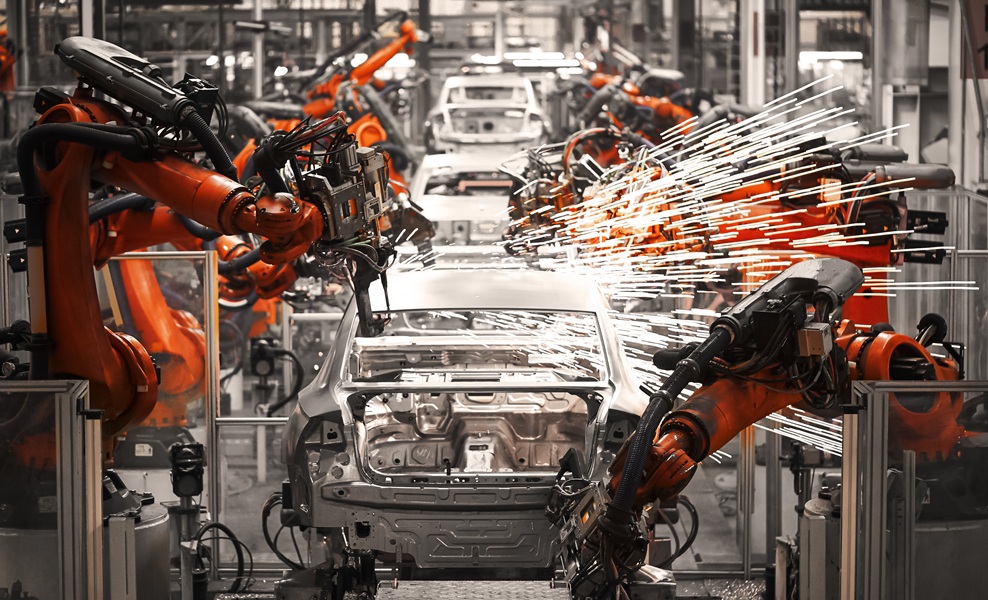The next decade will mark the transition from automated to autonomous robotics. By 2035, advances in AI, sensing, and digital infrastructure will create machines capable not only of executing programmed tasks but of understanding their environments, adapting in real time, and learning from experience. This evolution will redefine how manufacturing, logistics, and energy systems are designed and managed, turning robotics into an intelligent network of collaborative, self-optimising entities.
Industrial robotics has long been defined by precision, repeatability, and control. Robots have excelled at tasks that are structured and predictable, but they have struggled when confronted with uncertainty. The next generation of machines will move beyond this limitation. The journey to 2035, as outlined in Hexagon’s Future of Robotics 2035 report, will be defined by the maturation of AI algorithms, sensor integration, and model-based reasoning that allows systems to perceive, plan, and act within complex environments.
Traditional automation relied on static programming. In contrast, emerging robotic systems are increasingly adaptive, driven by advances in machine learning that enable them to adjust to variation without human intervention. This shift is not about replacing human input entirely but about expanding the robot’s operational domain. The ability to infer context, anticipate change, and modify behaviour autonomously will distinguish the robots of the next decade from the industrial machines of today.
Hexagon describes this transformation as a four-stage progression of maturity. The first stage, task automation, defined by fixed processes and pre-programmed motion, is already widespread. The second, adaptive robotics, introduces limited learning within constrained environments. The third, autonomous collaboration, will see robots sharing information and tasks with other machines, while the final stage, embodied intelligence, represents full contextual awareness, a synthesis of physical ability and cognitive capability. Reaching that fourth stage by 2035 will require continuous advances in AI, sensing, and edge-to-cloud integration, along with new design principles for safety and interoperability.
The fusion of perception and reasoning
To move toward autonomy, robotics must first master perception. The Hexagon study highlights that by 2035, progress in sensor fusion will enable robots to interpret the physical world with unprecedented fidelity. Vision, tactile feedback, radar, and thermal sensing will merge into multimodal systems that feed contextual data to AI models. The result will be machines that do not merely detect but understand, distinguishing between objects, materials, and actions through probabilistic reasoning rather than fixed rules.
Perception, however, is only the beginning. Once robots can construct accurate digital representations of their environment, they must reason about it. The emergence of embodied AI, where cognitive processes are integrated directly into physical systems, will make this possible. Deep learning architectures will be combined with symbolic reasoning, enabling robots to navigate unfamiliar scenarios, coordinate with other machines, and respond dynamically to human presence.
These capabilities will be reinforced by digital twins that act as living models of both robot and environment. Within these virtual counterparts, robots can test hypotheses, simulate outcomes, and refine their responses before acting in the real world. By 2035, this loop between simulation and execution will form the cognitive backbone of robotics, allowing machines to learn continuously without halting operations.
Building intelligent infrastructure for robotic ecosystems
As robotics become more intelligent, their success will depend less on the sophistication of individual units and more on the strength of the digital infrastructure connecting them. The Future of Robotics 2035 report notes that by 2035, industrial ecosystems will consist of thousands of interoperable robotic entities coordinated through shared data environments. This interconnectedness requires scalable compute power, standardised communication protocols, and secure orchestration layers capable of managing distributed intelligence.
Edge computing will be crucial. Robots cannot rely solely on cloud processing; latency and bandwidth constraints demand that much of the cognitive workload be handled locally. Edge-based AI allows for real-time decision-making, reducing dependency on centralised systems and enabling autonomy even in disconnected or hazardous environments. In parallel, cloud platforms will provide global optimisation, analysing aggregated data to improve coordination, predict maintenance needs, and simulate network-wide performance.
This hybrid infrastructure represents the next frontier of digital transformation in manufacturing and logistics. It will also raise new governance challenges. Security, transparency, and data provenance will be essential to maintain trust as robotic ecosystems become more autonomous. The industry must adopt open standards and interoperable frameworks to ensure that intelligent machines can collaborate safely across organisational and national boundaries.
Sector-specific pathways to 2035
While the trajectory of robotics maturity appears universal, the pace of adoption will vary significantly by sector. The Hexagon report identifies manufacturing, logistics, healthcare, and energy as the leading industries for near-term advancement. Each faces different technical constraints and incentives for adopting embodied intelligence.
Manufacturing will remain the primary driver. By the early 2030s, fully digitalised factories will employ collaborative robotic swarms capable of configuring themselves for different production runs. The combination of digital twins, machine vision, and adaptive control will eliminate many of the manual calibration tasks that currently slow throughput. Predictive analytics, powered by AI models embedded within robotics controllers, will allow production systems to anticipate component wear, schedule maintenance, and adjust parameters automatically to maintain quality.
In logistics, the shift toward autonomy will transform fulfilment networks. Intelligent mobile robots, equipped with spatial reasoning and cross-modal perception, will collaborate seamlessly with human workers in dynamic environments such as warehouses and ports. By 2035, these systems will form the foundation of self-optimising supply chains, capable of rerouting goods in real time based on demand, weather, or geopolitical disruptions.
Healthcare robotics will evolve along a different path. Precision, safety, and explainability will take precedence over speed. Surgical and rehabilitation robots will increasingly combine sensor feedback and cognitive reasoning to deliver adaptive, personalised care. Here, AI will augment rather than replace clinical expertise, supporting decision-making rather than automating it entirely.
In the energy sector, robotics will enable inspection, maintenance, and decommissioning in hazardous or remote environments. By 2035, self-navigating drones and robotic crawlers will monitor critical infrastructure such as offshore wind farms, pipelines, and power grids, analysing sensor data to detect early-stage faults. These systems will form part of a broader energy intelligence network — one where AI orchestrates both physical and digital assets to optimise performance and reduce risk.
Regional divergence and the global innovation map
The report also points to clear regional differences in the maturity timeline. Asia-Pacific, particularly Japan, South Korea, and China, will maintain leadership in robotic hardware and industrial deployment, driven by national strategies and strong integration between research and manufacturing ecosystems. Europe’s strength will lie in safety standards, ethics, and high-precision engineering, positioning it as the model for regulatory governance and interoperability. North America, by contrast, will continue to dominate in AI algorithms and data infrastructure, linking cloud platforms with embodied systems.
By 2035, these regions will converge technologically while maintaining distinct approaches to innovation. The challenge for global manufacturers will be interoperability across supply chains that span these diverse regulatory and technical landscapes. Shared data standards and collaborative frameworks will therefore become as critical as hardware performance or algorithmic capability. The convergence of these regional strengths will shape a new era of industrial cooperation, one where robotics maturity becomes a measure of national competitiveness.
Human collaboration and ethical integration
The technical trajectory toward autonomy does not negate the importance of human collaboration. On the contrary, the Hexagon report predicts that by 2035, human–robot interaction will be one of the most active fields of innovation. Cobots, collaborative robots, will evolve from simple assistive tools into intuitive partners capable of interpreting gestures, language, and emotional cues.
This shift will demand not only new interface technologies but also new models of trust. Humans must be able to understand and anticipate robotic behaviour. Transparency in decision-making will therefore become a design principle, not an afterthought. Explainable AI techniques will be embedded into robotics systems, allowing operators to trace the reasoning behind autonomous actions.
Ethics will play an equally central role. As robots assume greater responsibility, questions of accountability and fairness will intensify. The report outlines the need for sector-wide governance frameworks that balance innovation with public confidence. Ensuring that robotic intelligence remains aligned with human values, from workplace safety to data privacy, will define whether autonomy enhances or erodes social trust.
Manufacturing the intelligent frontier
By 2035, the boundaries between robotics, AI, and industrial infrastructure will have dissolved. Factories, warehouses, and energy facilities will operate as integrated systems of perception, computation, and action. Robots will move from performing discrete tasks to orchestrating entire workflows, guided by predictive analytics and real-time coordination.
The implications for productivity are profound. Fully autonomous systems will enable near-zero downtime, adaptive production lines, and dynamic reconfiguration based on demand or material availability. Maintenance will become predictive, quality control continuous, and logistics self-organising. These capabilities will not only reduce cost but also increase resilience, allowing industries to respond swiftly to disruption.
However, the transition will not be automatic. The Hexagon report warns that the greatest challenge is not technological invention but integration. Building a robotics ecosystem requires harmonising AI models, communication standards, and safety protocols. Fragmentation could slow adoption unless industries commit to collaborative innovation and open technical governance. The future of robotics, therefore, depends as much on policy and partnership as on engineering breakthroughs.
The path ahead
The robotics landscape of 2035 will be defined by intelligence that is distributed, embodied, and adaptive. Machines will perceive, reason, and collaborate in ways that blur the line between the digital and physical worlds. Yet this transformation will demand a sustained commitment to technical rigour, ethical responsibility, and interoperable design.
For executives steering digital transformation, the lesson is clear. Autonomy will not emerge from isolated innovation. It will require a coordinated architecture that integrates data, algorithms, and human oversight into a single continuum of intelligence. As robotics moves from automation to autonomy, the question for industry is no longer whether machines can think, but how well we can design the systems that allow them to learn.






